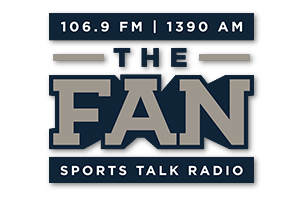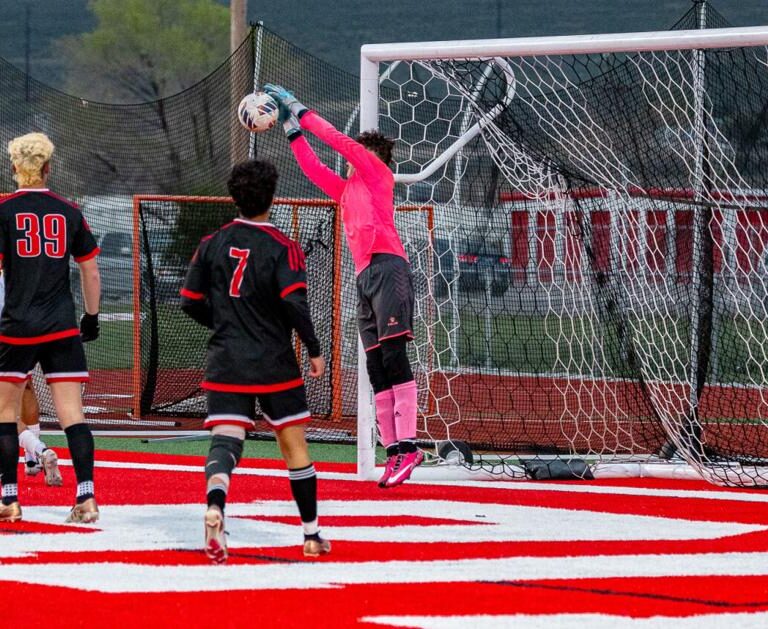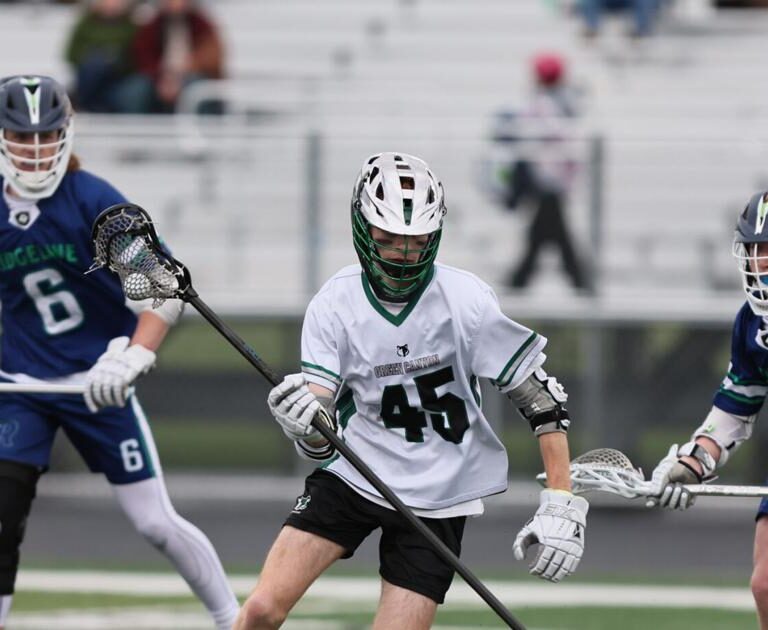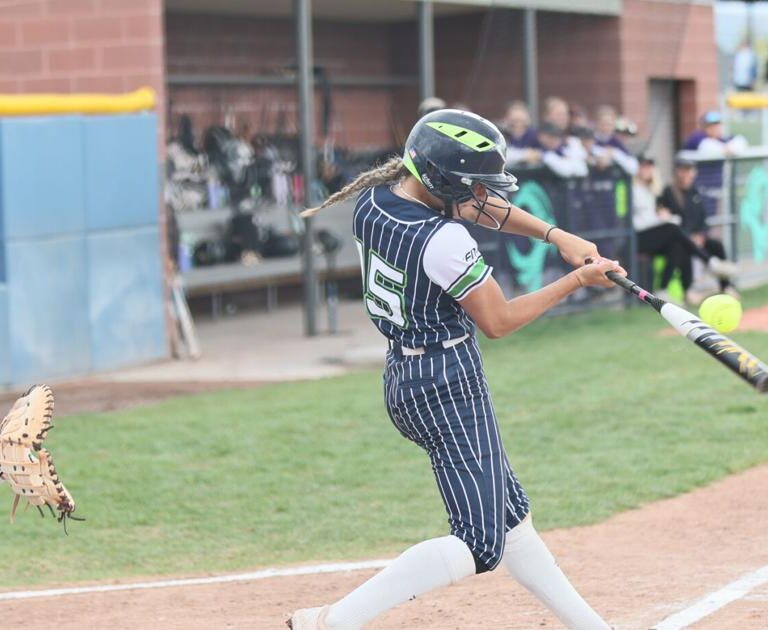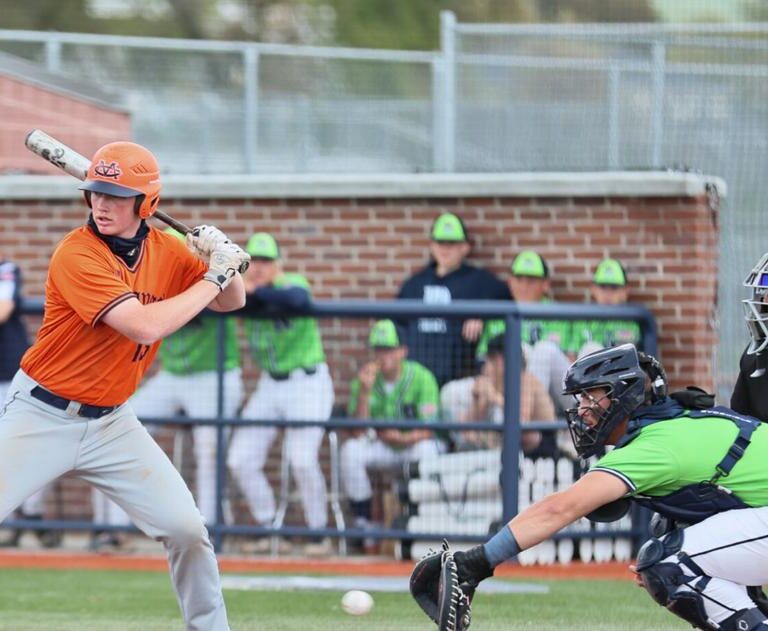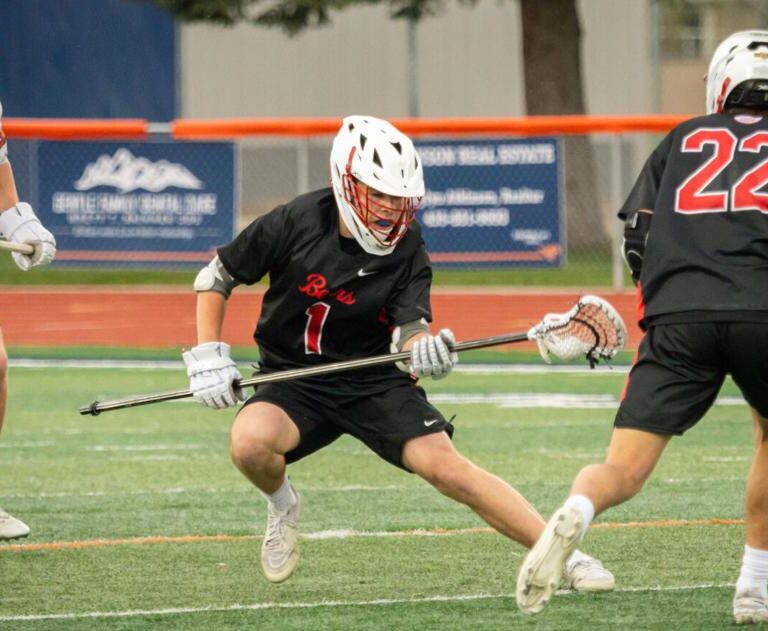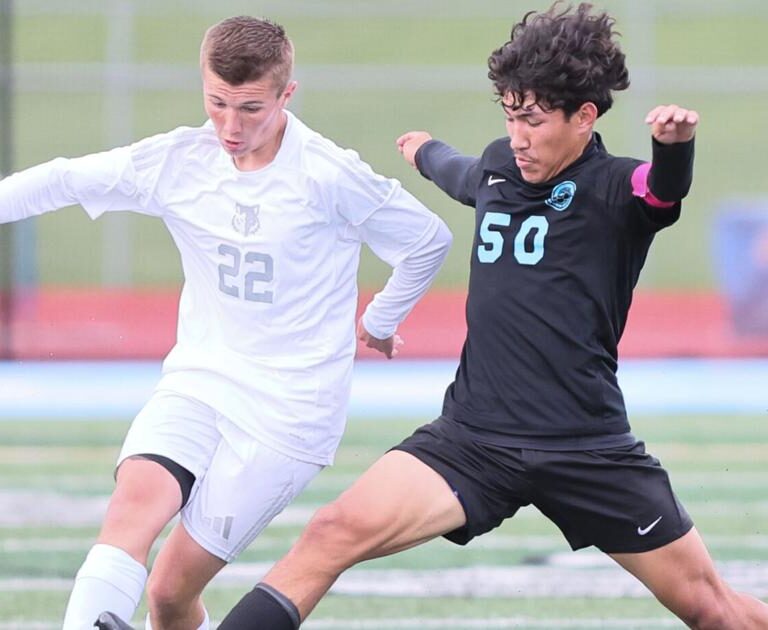Utah State wide receiver Brandon Swindall (11) celebrates after a touchdown during the second half of the Famous Idaho Potato Bowl NCAA college football game against Akron in Boise, Idaho, on Tuesday, Dec. 22, 2015. Akron won 23-21. (AP Photo/Otto Kitsinger)
This Saturday, Utah State will participate in the 27th edition of the Famous Idaho Potato bowl. It’s a familiar place for the Aggies in their growing bowl history. In fact, USU’s history with the bowl dates back all the way to its inception in 1997 when it was called the Humanitarian Bowl. With this year’s selection to the bowl, the Aggies will have the most appearances in the bowl all-time, five, breaking a three-way tie between them, Boise State and Nevada. Utah State is only 1-3 in the four games it’s played so far which is tied with Nevada for the worst record in the bowl’s history.
Here’s a rundown of each of those Potato Bowl appearances along with a summary of each game.
1997 vs Cincinnati
Utah State – 19 | Cincinnati – 35
Just a few years after Utah State earned its first-ever bowl win, the Aggies were back in another bowl, continuing a trend of making multiple bowl games in a decade but then having large gaps between other appearances (USU went to bowl games in 1946 and 1947, then none until 1960 and 1961, then another gap until bowls in 1993 and 1997). One thing that wouldn’t continue from the previous bowl game was the win.
Despite eventually losing the game, it was a minor miracle that Utah State made a bowl at all. One writer called the mismatch between Utah State and Cincinnati a meeting between “two of the most unlikely bowl teams of the year.” The Aggies, for their part, began the year 2-4 and were on track for another below-.500 season. But then four straight wins put them at 6-4, making USU bowl eligible with an extra week to spare. Cincinnati had its own unlikely story, being a team that hadn’t appeared in a bowl game since 1950, which was the longest Division I bowl drought up until the moment they stepped on the unsightly blue turf in Boise.
This meeting would be the inaugural edition of the bowl, known at the time as the Humanitarian Bowl. But although this was meant to be an exciting football event, the drama prior to the game is genuinely just as interesting, perhaps more so, than the game itself. Reports claimed that Cincinnati managed to spend almost two-thirds of the $750,ooo bowl payout on expenses related to simply getting the team to the bowl game and that wasn’t even the most potentially embarrassing thing to happen.
Prior to the bowl game, Utah State head coach John L. Smith accepted the head coaching job at Louisville, but rather than immediately fly off to his new post, Smith stayed on at USU to coach his final game. This awkward extension of his time with the Aggies seemed to lead to a lackluster level of discipline for the team and Smith did little to reel in the problem, apparently not setting a curfew despite that being a fairly regular practice for bowl trips. And on the Friday night before the Monday game a few USU players got into a bit of an incident. More than a dozen local police officers responded to a 911 call at “Joe’s Down Under” dance club involving as many as 20 USU football players. The incident was supposedly “resolved peacefully” but the club owner stated the Aggie players acted rather arrogantly “walking across the middle of the dance floor with beer in their hands acting like they were the king of the world, sauntering and strutting” according to a quote in The Salt Lake Tribune. When those players were asked to leave other USU players physically blocked the door, preventing club staff from tossing out the offending Aggies.
Though the drama was reaching a high point, fans weren’t exactly swarming the ticket offices. The novelty was enough to bring roughly 14,000 local spectators to see the game, but the Aggies reportedly sold less than 1,500 tickets. Cincinnati didn’t fare much better with less than 2,000 tickets sold on their end. The reported 16,131 reported attendance remains the fourth-lowest attendance (excluding the COVID-19 year) in the bowl’s history — a slow start to a bowl that in later years would regularly top 25,000.
As for the actual game, well as already mentioned Utah State did not fare well at all. Incoming head coach Dave Arslanian patrolled the sidelines, observing the Cincinnati domination in the first half. The Bearcats went up 21-0 in the first half and eventually held a 28-0 lead in the second half. Cincinnati head coach Rick Minter and game MVP Chad Plummer credited the offensive line for controlling the line of scrimmage.
Plummer, for his part, turned in a triathlon performance, completing 5-of-9 passes for 62 yards, rushing 15 times for 53 yards and a touchdown, and catching four passes for 64 yards. Smith said the all-around Plummer was “too much for us” and that they “couldn’t keep track of him.”
Utah State would eventually get on the scoreboard thanks to a Steven Smith 75-yard touchdown reception from Matt Sauk, a USU bowl game record for longest play from scrimmage. Smith ended the game with four receptions for 136 yards. Utah State also got touchdowns from Melvin Blue (three-yard run with 29 seconds left in the third quarter) and Brent Passey (10-yard fumble recovery with 14:18 left in the game).
2011 vs Ohio
Utah State – 23 | Ohio – 24
The Aggies would return to the Potato Bowl (after it’d gone through five name changes since the inaugural game) after a 14-year drought in bowl appearances. This gap between the 1997 Humanitarian Bowl and the 2011 Potato Bowl is the second-longest bowl drought in Utah State program history, exceeded only by the 32-year gap between the 1961 Gotham Bowl and 1993 Las Vegas Bowl.
But unlike previous gaps, the 2011 bowl eligible Aggies would begin a trend that reversed the program’s long-running issues with being unable to qualify for these postseason contests. Since, and including, the 2011 season. Utah State has appeared in a bowl game in 11 of 13 seasons.
Gary Andersen, in his third year at Utah State, led the Aggies to their first six-win season since 1997, though to start the year, it looked as though the 2011 season would be business as usual as the team began the year with a 2-5 record. Then the unthinkable happened. USU went on a five-game winning streak, the longest win streak for the program since a six-game streak in 1993. In 1993 a five-game streak to end the regular season got the Aggies to a bowl. The same trick worked in 2011 as Utah State wormed its way from that 2-5 record to bowl eligibility.
Unfortunately, the Aggies wouldn’t be able to match the six-game win streak that 1993 squad pulled off, losing to Ohio in a last-minute thriller. The Aggies held leads of 9-0, 16-7 and 23-10, but failed to hold off a second-half rally by the Bobcats despite several chances to close the deal.
One of those chances came with just over four minutes left. Utah State got the ball on its own seven-yard line with a chance to burn up lots of clock using its star running back duo of Robert Turbin and Michael Smith. But the Aggies did something they hadn’t done all game — go three-and-out. Turbin’s first down run went for no gain, quarterback Adam Kennedy tripped on the next play and lost two yards, and Smith’s third down run couldn’t salvage any of that, going for just three yards.
Ohio took over on its own 39-yard line after a clutch 49-yard punt from Tyler Bennett and some even better work by the Aggie gunners to force a four-yard loss on the punt return. But all of that meant nothing as the Bobcats went the distance in just under two minutes of game time. With 13 seconds on the clock, Tettleton scrambled around the right end of his line and dove over the goal line and the extra point gave his side the ultimate 24-23 lead.
2012 vs Toledo
Utah State – 41 | Toledo – 15
The 2012 season is about as good as it’s ever been for Utah State and, at the time, was at least the best the Aggies had been since the early 1960s. It’s known for a couple of “almosts” as in how Utah State almost won at Wisconsin (lost 16-14) and almost won at BYU (lost 6-3). But the season is also well-known for many of the things Utah State did accomplish, such as the first 10-win season in program history. The Aggies ended up with 11 wins, including victories over the University of Utah and a ranked Louisiana Tech team. Utah State itself earned a spot in the AP Top 25 Poll after that win over Louisiana Tech.
Just under 30,000 people went to watch Utah State take on Toledo, the most ever to watch a bowl game involving USU (and the most the Potato Bowl has seen in the last 11 years). And for three quarters the fans got a close game. Utah State led by only 13-6 entering the final quarter and with 7:28 left in the game Toledo cut that down to 13-9.
But that’s when Utah State’s two-headed dragon of quarterback Chuckie Keeton and running back Kerwynn Williams took over.
In less than six minutes of game time after Toledo drew within four points, the Aggies scored four touchdowns. Williams was responsible for three of those scores. When the final whistle finally blew, Williams and Keeton had combined for more rushing yards (327) than Toledo had total yards (315).
Williams ran for 235 yards — still a USU bowl record — on just 18 carries and Keeton had 92 on only nine rushes. In all, Utah State averaged 11.4 yards per rush (31 rushes, 353 yards) which is an NCAA bowl game record (minimum 30 attempts).
Toledo would never reach the end zone on offense, managing just three field goals and an 87-yard kick return touchdown that came after the Aggies had gone up 34-9 with under four minutes left in the game.
This victory would end nearly 20 years of Utah State not winning a single bowl game.
2015 vs Akron
Utah State – 21 | Akron – 23
This bowl was the capstone in what remains the longest consecutive bowl streak in Utah State history at five straight appearances (the Aggies are up to three straight with this year’s bowl). Before 2011, the Aggies had been in just five official bowl games, but in the span of just five years that number had been doubled. And in addition to that, Utah State had won three straight bowl games, the 2012 Potato Bowl, 2013 Poinsettia Bowl and 2014 New Mexico Bowl. That’s also the longest streak in Aggie bowl game history.
Unfortunately, this bowl would be not only the end of that winning streak, but also the last in the five-year run of bowl games.
Overall, the 2015 season was quite odd, owing mostly to the Aggies’ inconsistency. They started off by only barely skating by a non-FBS opponent, Southern Utah, by a score of 12-9. After that narrow miss, Utah State went on to go toe-to-toe with a ranked University of Utah team in an eventual 24-14 loss. Later on, Utah State had games it was blown out in, like a 48-14 loss to San Diego State, but also blew out a ranked Boise State team 52-26. Unpredictable was perhaps the best descriptor of the Aggies.
Part of that unpredictability of Utah State came from having two quarterbacks, Keeton and Kent Myers consistently playing each week. Keeton cemented his legacy with that 2012 season mentioned above as it’s one of the best single seasons in USU quarterbacking history alongside the team success, but the remainder of his career was spotty and riddled with injuries and thus an inability to live up to his potential. This year was his final one as a player, though he only played in seven of the team’s 13 games. Myers played in nine games and the two ended up attempting exactly 199 passes each. Myers fared far better, completing 61 percent of his passes with 16 touchdowns and three interceptions with Keeton completing just 52 percent of his passes for four touchdowns and seven interceptions.
Despite Myers’ statistically superior season, both teams got an even number of playing time in bowl game against Akron. That could have been a mistake given how tough the Zips’ defense was that year, ranking 23rd in the nation in points allowed per game.
That solid Akron defense kept the Aggies from scoring for nearly the entire first half with Utah State punting away its first four possessions, going three-and-out each time. Both Keeton and Myers got shots at getting the offense going but neither got anything going. Furthermore, the first drive where USU even got a first down ended with Keeton throwing an interception from just outside the red zone.
More turnovers ended potentially game-changing drives for the Aggies throughout the game and prevented them from seizing control of the game. After managing to go up 14-13, USU fumbled the ball with Akron eventually scoring to take a 20-14 lead, which gave the Zips enough room to hold off a late rally attempt from Keeton and the Aggies.
